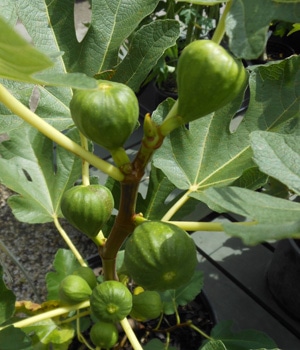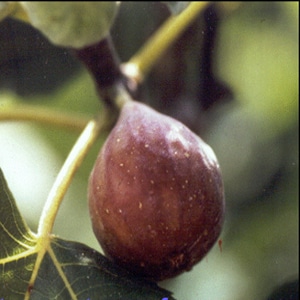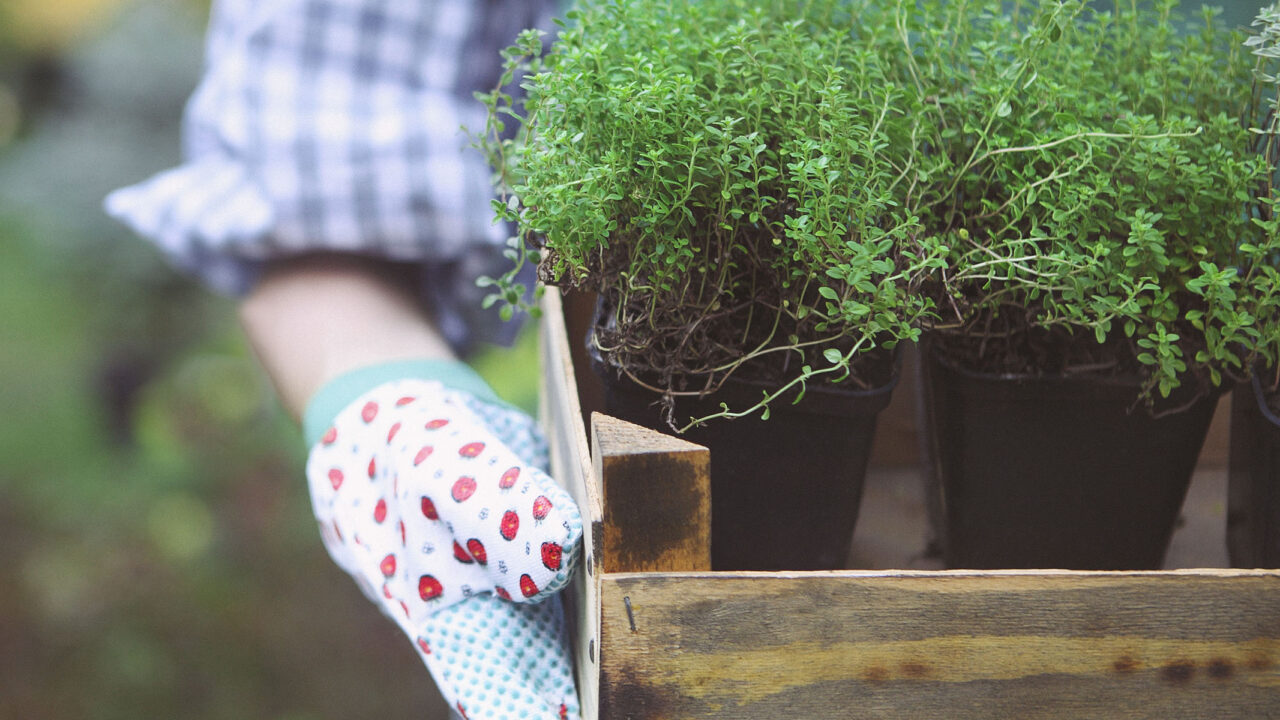When it comes to growing fruit in Texas, you can’t get any easier than figs! Common figs, of the species, Ficus carica, are unique in that they do not require pollinators for the fruit to develop. What you’re actually eating when you enjoy a fig is modified stem tissue, instead of mature ovary tissue (such as in a peach or apple). In common figs, both the male and female flower parts are inside the stem tissue. What you find inside the fruit that look like “seeds” are actually just unfertilized ovaries that did not make fruit. Some of the best common fig varieties for the Houston area are ‘Celeste’, ‘Brown Turkey’, ‘Alma’, ‘Tiger’, ‘Texas Blue Giant’ and ‘Black Italian’.

Figs have long been grown on homesteads because of their easy culture and adaptability. They are very happy in warm climates and will produce the best fruit in Mediterranean climates. That means hot, dry summers and cool wet winters. Mature trees are cold hardy to about 15 or 20º F.
Figs need a full sun exposure to produce fruit. Full sun means ideally a minimum of 6-hours of direct sunlight, but more is better. Make sure to find an open site with sun most of the day. If possible, plant figs on a Southern exposure where the early developing fruit will be more protected from cold. Figs grow quickly with a shallow, spreading root system. Depending on the variety, they can quickly reach 15 – to 30-feet tall. While figs tolerate many different soil types, good drainage is key. Don’t plant them in low spots in the garden where excess moisture accumulates. Figs can be planted just slightly deeper than soil than they were growing in their nursery pot and should not be fertilized at planting; but do use a root stimulator. Plants will need supplemental watering during summer months for the first several years. Once they are well established they are very low-maintenance plants.

Avoid pruning figs unless you need to take out broken or dying growth. You can thin growth in older trees to stimulate new lateral branching and encourage more fruit production. Figs must experience dormancy in winter so be sure to reduce any supplemental watering in the fall to encourage plants to go dormant over time. Plants that still have lots of foliage on them will be more susceptible to freeze damage.
Figs do appreciate a soil rich in organic matter. Organic gardeners should apply generous amounts of compost and a high-nitrogen organic fertilizer like cottonseed, soybean or alfalfa meal in spring.
Allow your fig fruit to fully ripen on the tree, but be careful not to allow too much fruit to over-ripen. Spoilage in drying fruit can occur as a result of the dried fruit beetle. Spoilage on the tree can occur from microorganisms in the fully ripened fruit. Daily harvest and regular removal of over-ripening fruit from the tree can cut back on these problems.
There are so many ways to enjoy figs and growing them yourself makes them taste even better. Come see us today at Buchanan’s and choose from our great selection of fig plants in stock. Also be sure to check out everything else that’ s going on at the garden center this week!
